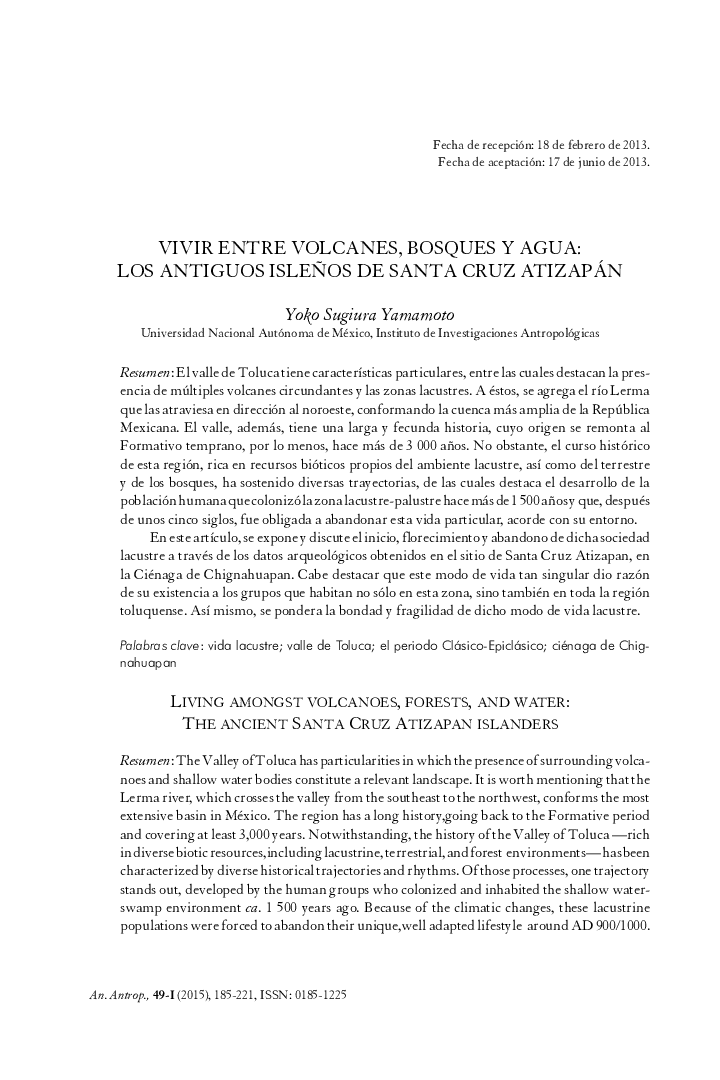| Article ID | Journal | Published Year | Pages | File Type |
|---|---|---|---|---|
| 1157312 | Anales de Antropología | 2015 | 37 Pages |
ResumenEl valle de Toluca tiene características particulares, entre las cuales destacan la presencia de múltiples volcanes circundantes y las zonas lacustres. A éstos, se agrega el río Lerma que las atraviesa en dirección al noroeste, conformando la cuenca más amplia de la República Mexicana. El valle, además, tiene una larga y fecunda historia, cuyo origen se remonta al Formativo temprano, por lo menos, hace más de 3 000 años. No obstante, el curso histórico de esta región, rica en recursos bióticos propios del ambiente lacustre, así como del terrestre y de los bosques, ha sostenido diversas trayectorias, de las cuales destaca el desarrollo de la población humana que colonizó la zona lacustre-palustre hace más de 1 500 años y que, después de unos cinco siglos, fue obligada a abandonar esta vida particular, acorde con su entorno.En este artículo, se expone y discute el inicio, florecimiento y abandono de dicha sociedad lacustre a través de los datos arqueológicos obtenidos en el sitio de Santa Cruz Atizapan, en la Ciénaga de Chignahuapan. Cabe destacar que este modo de vida tan singular dio razón de su existencia a los grupos que habitan no sólo en esta zona, sino también en toda la región toluquense. Así mismo, se pondera la bondad y fragilidad de dicho modo de vida lacustre.
The Valley of Toluca has particularities in which the presence of surrounding volcanoes and shallow water bodies constitute a relevant landscape. It is worth mentioning that the Lerma river, which crosses the valley from the southeast to the northwest, conforms the most extensive basin in México. The region has a long history, going back to the Formative period and covering at least 3,000 years. Notwithstanding, the history of the Valley of Toluca —rich in diverse biotic resources, including lacustrine, terrestrial, and forest environments— has been characterized by diverse historical trajectories and rhythms. Of those processes, one trajectory stands out, developed by the human groups who colonized and inhabited the shallow water-swamp environment ca. 1 500 years ago. Because of the climatic changes, these lacustrine populations were forced to abandon their unique, well adapted lifestyle around AD 900/1000.This article covers the emergence, apogee, and abandonment of a lacustrine society which developed in Santa Cruz Atizapan, located in the Chignahuapan swamp, in the southernmost lacustrinearea of the Toluca valley. It stresses the important role which this ecological zone played in the history of the region. It also mentions the idiosyncrasy of this lifestyle, its strength and vulnerability.
